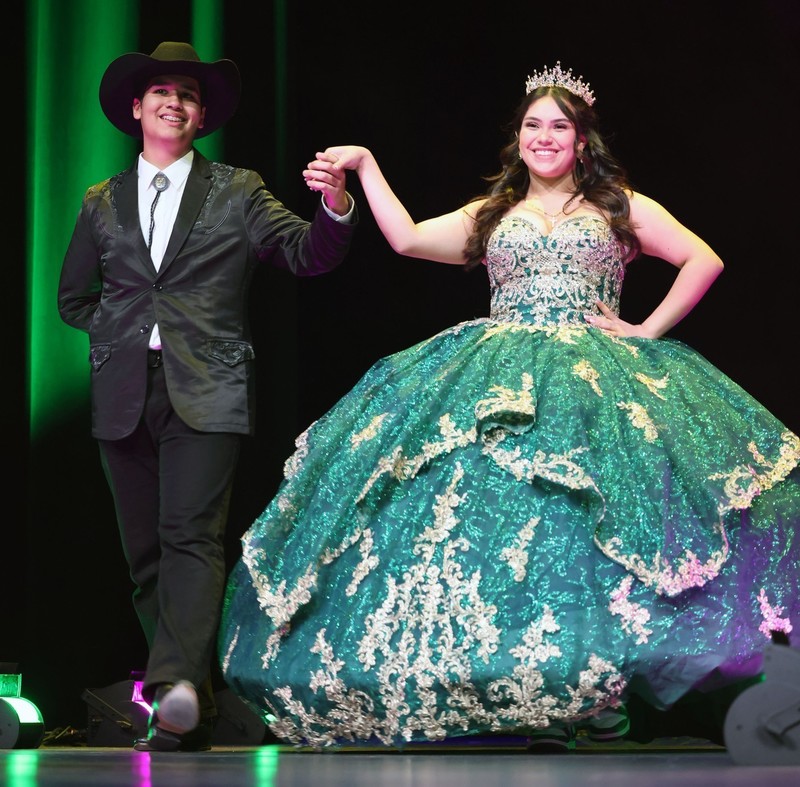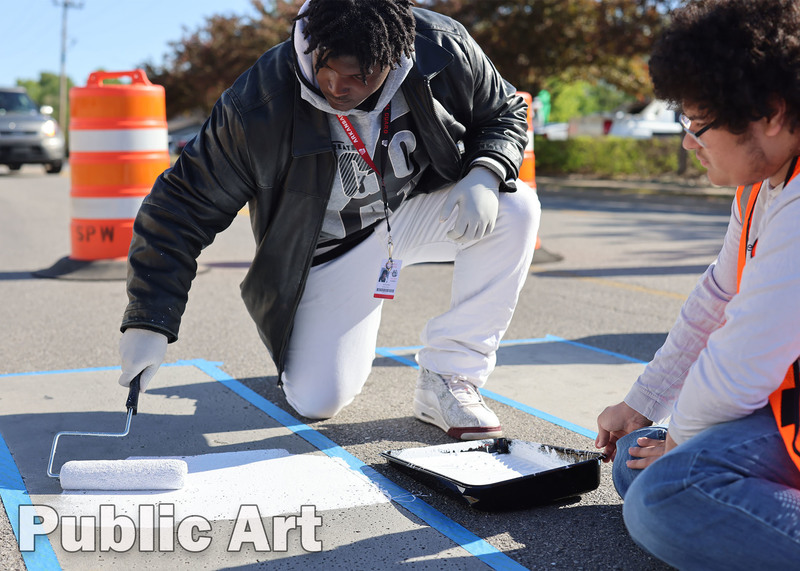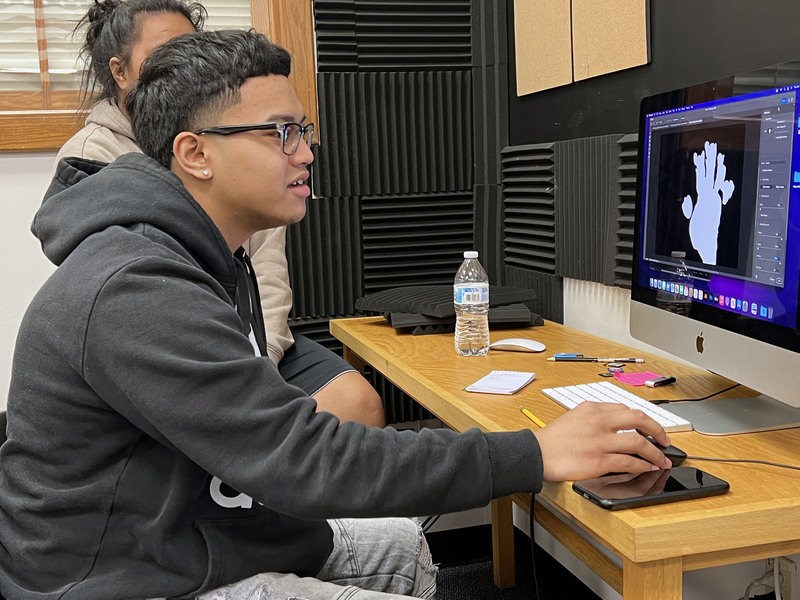
By Mary Jordan
Springdale Public Schools

Growth of Springdale’s creative economy is a valued aspect of the city’s growth and revitalization, as is Springdale Public Schools’ investment in creative education.
“School districts serve as a nexus for developing citizens who’re able to embrace the vision of a community and help make it a reality,” said Dr. Jared Cleveland, Springdale Public Schools superintendent. “Springdale Schools’ development of creative education pathways helps stimulate the growth of the region, community partnerships, local industry and an inspired workforce.”
There was a time when economic development and city growth meant greenfield development and the ability to attract large warehouses, facilities and manufacturing to Springdale, said Bill Rogers, Springdale Chamber of Commerce president and CEO.
“Today, I think economic development, city growth, is tied closely to quality of place, and I think the creative economy adds directly to that,” Rogers said. “A creative economy community provides all the extras that add depth to a place and why you want to live there, why a company would want to move there, why a company who is in an area would want to expand and employ more people.”
Creative industries such as performing and visual arts, film and event production, culinary arts, construction and fabrication, research and development, veterinary science, public art, marketing, engineering, architecture and music are all significant contributors to a creative economy, said Kelley Williamson, Springdale Public Schools career and technical education coordinator. All are likewise educational and career pathways Springdale students can explore.

Economic Impact
The significant influence of the creative economy shouldn’t be overlooked, said Trent Jones, Springdale Public Schools communications director.
Arkansas’ nonprofit arts and culture industries generated about $104.4 million in event-related spending by its audiences in 2022, according to the Creative Arkansas Community Hub and Exchange website.
Some $202.1 million in spending by Arkansas nonprofit arts and culture organizations and $104.4 million in event-related spending by their audiences likewise supported about 4,800 jobs and generated $49,377,951 in local, state and federal government revenue in 2022, according to CACHE.
(Read the full story on the scope of the creative economy nationally and within Northwest Arkansas here.)
“There’s a ripple effect that occurs when a community comes together for gatherings like the district’s annual Caroling on the Creek event, and events such as rodeos, live music, ballgames at Arvest Ballpark and community celebrations,” Jones said. “Even gassing up your car and grabbing lunch at a local restaurant on the way to a visit to the Jones Center has an impact.”


City Planning
Creative growth is also a significant factor in Springdale’s Downtown Master Plan, which was adopted in 2009.
The plan builds upon downtown Springdale’s unique character and authenticity to return it to a vibrant center of commerce and creativity, according to the plan. The plan serves as the roadmap for the revitalization of downtown Springdale to maintain a vibrant mix of residential, retail, commercial, dining, entertainment, medical and public uses.
Creating a central gathering space on Main Street, supporting continued development of the Jones Center for Families’ existing programs, establishing Luther George Park, developing a mixed-use downtown arts, culture and educational district and linking Murphy Park and Luther George Park on Maple Ave are all significant creative factors of the plan.
“When I grew up here, our downtown was where you went to do almost any kind of business,” said Springdale Mayor Doug Sprouse. “We all realize what we lost when our economy was spread out into the outlying areas. We sort of lost the heart of what a downtown is, because it's much more than just retail. It is art. It is makers.”

Community Partnerships
Partnerships throughout Springdale factor into the city’s continued growth and development, Rogers said, adding Springdale Schools is working to produce tomorrow’s emerging workforce and to give graduates a reason to stay in the Northwest Arkansas to live and work.
“The role of a school is relevant, engaging and purposeful. You're building strong communities. You're building strong family units,” Jones said. “Springdale Schools is on the cutting edge of that.”
The district has created educational pathways that allow students to receive credentials and degrees toward creative careers, Williamson said. Partnerships with Northwest Arkansas Community College and Northwest Technical Institute also allow students to explore careers that are specifically needed in the region, to include construction, agriculture, technology and the medical sciences.
“When I graduated from Springdale High School in 1975, it was pretty much expected that in order to be successful, you're going to need to go to college,” Sprouse said, adding students have many more educational options today. “I am so encouraged by the work of our school district in the area of workforce development.”
Regional Growth
The need for a growing creative workforce is paramount for Springdale’s and Northwest Arkansas’ continued growth, Rogers said.
The U.S. Census Bureau estimates that the metropolitan statistical area of Benton and Washington counties experienced a population increase from 175,177 to 212,791 from April 2010 to July 2022. Springdale’s population grew from 69,797 to 87,672, an increase of about 26%, in the same timeframe.
The metropolitan statistical area, which consists of Benton, Madison and Washington counties in Arkansas had a population of 576,403 in July 2022, according to the U.S. Census Bureau. The Northwest Arkansas Metropolitan Transportation Plan, published in 2019 by the Northwest Arkansas Regional Planning Commission, projects the region will reach more than 974,000 people by 2045, an increase of about 69%.
Shaping Springdale
“Springdale is going to look completely different five years from now,” Rogers said, adding the city’s future is yet to be defined. “You have all the components to take that yet-to-be-identified interest and leverage it to make Springdale a unique place when it comes to cultural development.”
In doing so, the city will shape Springdale into a place where people want to and can afford to live, Sprouse said, noting that isn’t the case with some Northwest Arkansas downtown communities.
“If you want a modest place where you can live and work and raise a family, then that's available and in an affordable way,” he said of Springdale.
The different downtown communities featured throughout the region are part of what makes Northwest Arkansas a wonderful place to live, he said.
“People can travel just a few miles to different downtowns, including Springdale, and have completely different experiences, but all good,” Sprouse said. “We're just part of that quilt in Northwest Arkansas.”











